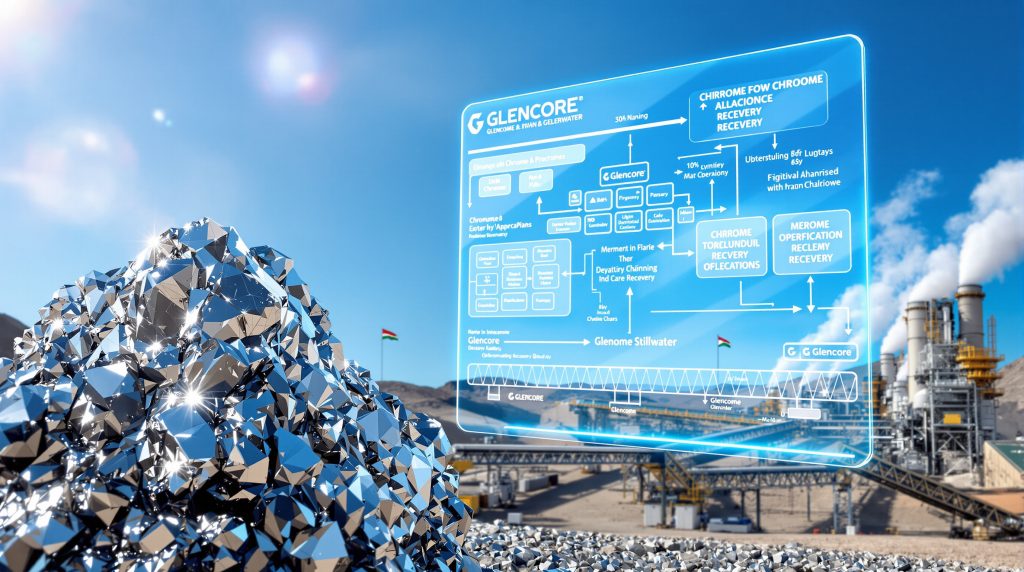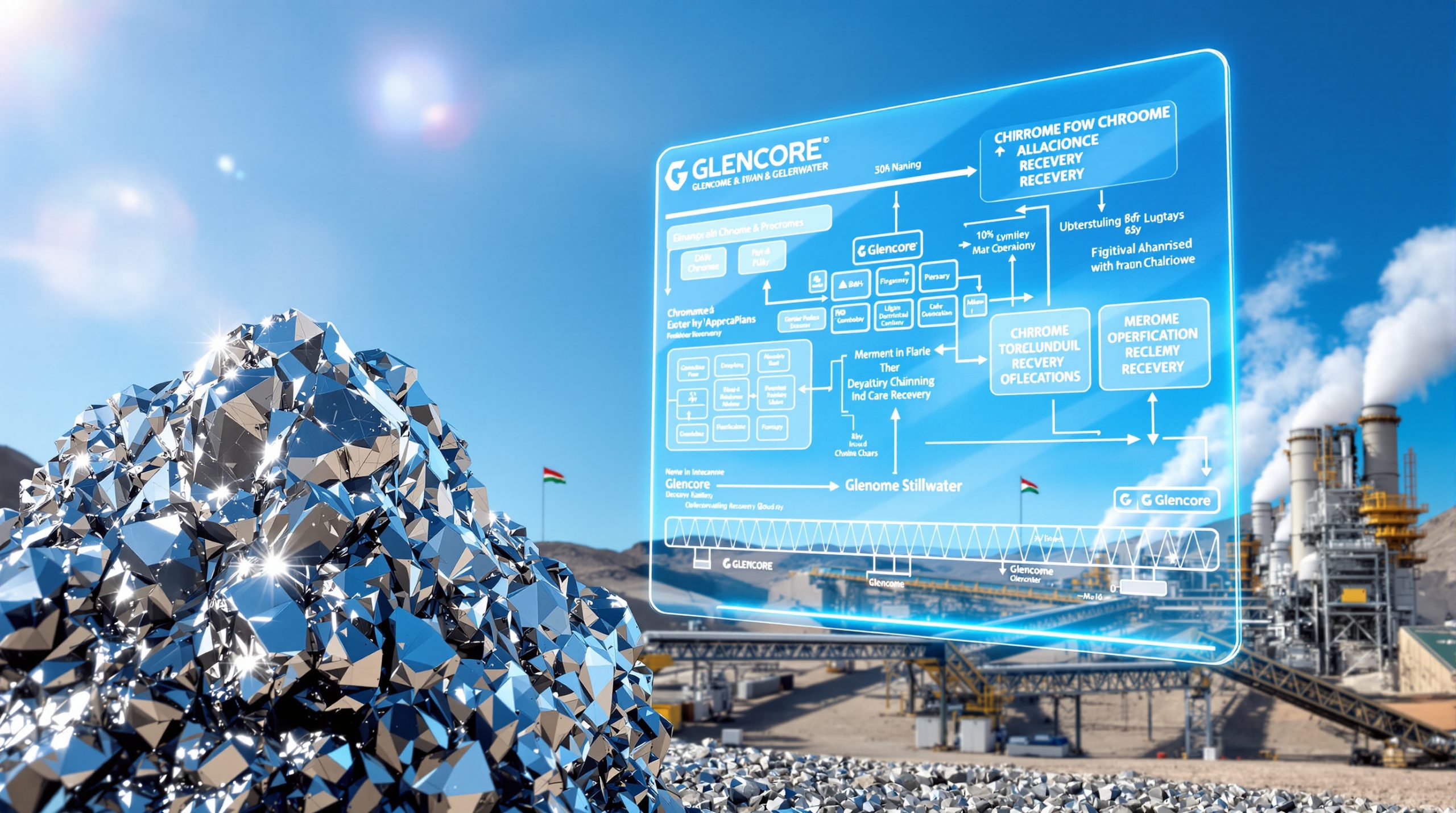Competition Tribunal Approves Glencore-Sibanye Chrome Operations Merger
The Competition Tribunal has granted unconditional approval for a strategic consolidation between Glencore Operations South Africa (GOSA) and Sibanye-Stillwater that transforms chrome recovery operations in South Africa. This landmark decision, finalized on October 7, 2025, allows the two mining giants to jointly manage several chrome recovery plants while maintaining their existing ownership structures.
The merger represents a significant development in South Africa's chrome sector, with GOSA acting on behalf of the Glencore-Merafe Pooling and Sharing Venture. This unincorporated arrangement falls under the ultimate control of US-incorporated and LSE-listed Glencore through its subsidiary Glencore Holdings South Africa.
Why Did the Competition Tribunal Approve the Merger?
Maintaining Competitive Balance
The Competition Tribunal's unconditional approval indicates that regulators found no substantial competition concerns in the chrome market. Their decision suggests the tribunal approves Glencore Sibanye-Stillwater chrome merger without imposing conditions that might hinder operational efficiency, demonstrating confidence that market dynamics remain healthy.
The Tribunal's willingness to grant approval without conditions demonstrates confidence that the operational consolidation preserves adequate market competition while enabling efficiency improvements.
Operational Benefits Without Ownership Changes
A key factor in the approval was the structure of the deal: while management of chrome recovery plants will be consolidated, ownership remains unchanged. This arrangement allows for operational efficiencies without triggering concerns about market concentration or reduced competition.
By preserving separate ownership while integrating management functions, the companies have created a framework that delivers operational benefits while addressing regulatory concerns about market power.
How Will the Merger Affect Chrome Production in South Africa?
Streamlined Operations
The joint management structure aims to optimize chrome recovery operations across multiple plants. By consolidating expertise and implementing standardized processes, the partnership is positioned to achieve greater operational efficiency and potentially increase chrome recovery rates.
This streamlining could lead to more consistent production outcomes and improved resource utilization across the combined operations. Standardized procedures may also enhance safety protocols and environmental management practices.
Enhanced Resource Utilization
The merger creates opportunities for better utilization of existing infrastructure and technology. By sharing best practices across operations, the companies can potentially extract more value from current assets without significant additional capital investment.
Resource optimization could include improved water management, energy efficiency, and better utilization of processing capacity. These improvements may help address some of the operational challenges facing South African beneficiation initiatives, including electricity constraints.
What Are the Strategic Benefits for Both Companies?
Complementary Expertise
Glencore brings extensive experience in chrome marketing and production through its Merafe Venture, while Sibanye-Stillwater contributes significant PGM operations with chrome by-products. This complementary expertise creates potential synergies in production, processing, and marketing.
The combination of Glencore's global marketing reach and Sibanye-Stillwater's operational expertise in South Africa creates a partnership with strengths across the value chain. This may help optimize decision-making around production volumes, product specifications, and market timing, as highlighted in recent Glencore operational update reports.
Revenue Diversification
For Sibanye-Stillwater, the partnership represents an opportunity to optimize chrome recovery from its PGM operations, potentially providing revenue diversification at a time when PGM prices have faced volatility.
Chrome recovery from PGM operations has historically been viewed as a secondary consideration, but efficient extraction can provide meaningful additional revenue streams. With PGM markets experiencing cyclical challenges, maximizing value from chrome by-products becomes increasingly important for overall profitability.
Market Position Strengthening
The consolidation may strengthen South Africa's position in the global chrome market, particularly important as the country competes with other chrome-producing nations while facing challenges in electricity supply and logistics.
By creating a more coordinated approach to chrome production and marketing, the partnership could help South African producers respond more effectively to market dynamics and competitive pressures from other producing regions.
How Does This Fit Into Broader Mining Industry Trends?
Operational Partnerships Without Ownership Changes
This arrangement reflects a growing trend in the mining sector toward operational partnerships that create efficiencies without full mergers or acquisitions. Companies increasingly seek to share expertise and infrastructure while maintaining separate corporate identities.
The structure represents an innovative approach to achieving synergies without the complexity and regulatory scrutiny that often accompanies full corporate mergers. This "lighter touch" integration exemplifies evolving mining consolidation trends that may become more common as companies seek efficiency gains in challenging market conditions.
By-Product Optimization
The focus on chrome recovery plants highlights the industry's growing emphasis on maximizing value from by-products. As primary metal prices fluctuate, mining companies are increasingly looking to optimize recovery of secondary minerals to enhance overall project economics.
This trend toward "whole ore" value maximization represents an important shift in mining economics, with companies seeking to extract value from every component of mined material rather than focusing exclusively on primary products.
South African Mining Consolidation
The approval comes amid broader consolidation in South Africa's mining sector, as companies seek scale and efficiency to address challenges including energy constraints, logistical bottlenecks, and global market pressures.
The chrome operations consolidation exemplifies how South African mining companies are finding innovative ways to improve competitiveness while navigating the complex regulatory environment governing mining M&A strategies in the country.
What Are the Implications for South Africa's Chrome Industry?
Production Efficiency
The joint management structure could lead to more efficient chrome production, potentially strengthening South Africa's position as the world's largest chrome ore producer and a key supplier to global stainless steel manufacturers.
Improved operational efficiency may help South African producers maintain competitiveness despite challenges including energy costs, labor dynamics, and logistics constraints. This is particularly important as chrome remains a strategically important export commodity for the country.
Employment Considerations
While the merger aims to improve operational efficiency, stakeholders will be watching closely for any impacts on employment at the affected operations, particularly given South Africa's high unemployment rate and the mining sector's role as a major employer.
The preservation of separate ownership structures may help maintain employment stability, though any significant operational changes will still need to be managed with sensitivity to workforce impacts in mining communities.
Export Potential
More efficient chrome recovery could potentially boost South Africa's chrome exports, an important source of foreign exchange for the country. This comes at a time when the government is seeking to maximize the value of mineral exports.
Enhanced production efficiency may also help South African producers adjust more nimbly to changes in global demand, potentially capturing additional market share in periods of supply constraint or price volatility.
What Happens Next in the Implementation Process?
Operational Integration
Following regulatory approval, the companies will now focus on implementing the joint management structure, including integrating systems, standardizing processes, and potentially reallocating resources to maximize efficiency.
The integration process will likely involve establishing unified management teams, harmonizing operational procedures, and implementing shared performance metrics across the combined chrome recovery operations.
Performance Monitoring
Stakeholders, including shareholders, employees, and government agencies, will closely monitor the performance of the consolidated operations to assess whether the promised efficiencies materialize.
Key performance indicators will likely include chrome recovery rates, operational costs, safety metrics, and overall financial contribution to both parent companies. Success will ultimately be measured by whether the operational partnership delivers value beyond what each company could achieve independently.
Market Response
The chrome market will be watching for any changes in production volumes or marketing strategies resulting from the consolidated operations, which could potentially influence global chrome pricing and trade flows.
Market participants will be particularly interested in whether the partnership results in more strategic approaches to production planning, inventory management, or sales strategies that could influence broader market dynamics.
FAQ: Key Questions About the Glencore-Sibanye Chrome Merger
Will the merger affect chrome pricing in global markets?
While the merger aims to improve operational efficiency, it doesn't significantly change market concentration or control. Therefore, major price impacts are unlikely in the short term, though improved efficiency could potentially influence production costs and volumes over time.
The maintenance of separate ownership structures means that fundamental market dynamics should remain largely unchanged, though more coordinated operations could potentially lead to more strategic production planning.
Does this merger represent a trend toward further consolidation in South Africa's mining sector?
The structure of this deal—consolidating management while maintaining separate ownership—represents an innovative approach to achieving operational synergies without full corporate integration, potentially setting a precedent for similar arrangements in other mining subsectors.
This hybrid model may become increasingly attractive in the South African context, where regulatory scrutiny of full mergers can be intensive and where companies seek to balance efficiency gains with compliance considerations.
How might this merger affect South Africa's position in the global chrome market?
By potentially improving production efficiency and recovery rates, the merger could strengthen South Africa's competitive position as the world's leading chrome producer, particularly important as the country faces competition from other producers.
Enhanced operational efficiency may help South African chrome producers weather cyclical market downturns more effectively and capitalize more quickly on favorable market conditions when they emerge, aligning with broader industry evolution trends.
What environmental implications might arise from the consolidated operations?
While the merger focuses on operational efficiency rather than expansion, any changes to recovery processes could have environmental implications. Stakeholders will likely monitor whether the consolidated operations lead to any changes in environmental management practices.
Optimized chrome recovery could potentially reduce waste material and improve resource utilization, though any process changes will need to comply with South Africa's environmental regulations and mining industry standards.
Further Exploration
Readers interested in learning more about developments in South Africa's mining sector can also explore related educational content at Mining Weekly's website, which provides ongoing coverage of mining industry news and developments.
As the implementation of this operational partnership progresses, industry observers will be watching closely to see whether it delivers the promised benefits to both companies and to South Africa's broader chrome sector. According to the Competition Commission's official statement, the tribunal approves Glencore Sibanye-Stillwater chrome merger based on thorough market analysis showing no substantive competition concerns.
Looking for Real-Time Insights on Major Mineral Discoveries?
Discover how to gain an edge in the mining investment market with Discovery Alert's proprietary Discovery IQ model, delivering instant notifications on significant ASX mineral discoveries and turning complex data into actionable insights. Visit Discovery Alert's discoveries page to understand why historic discoveries can generate substantial returns and begin your 30-day free trial today.




